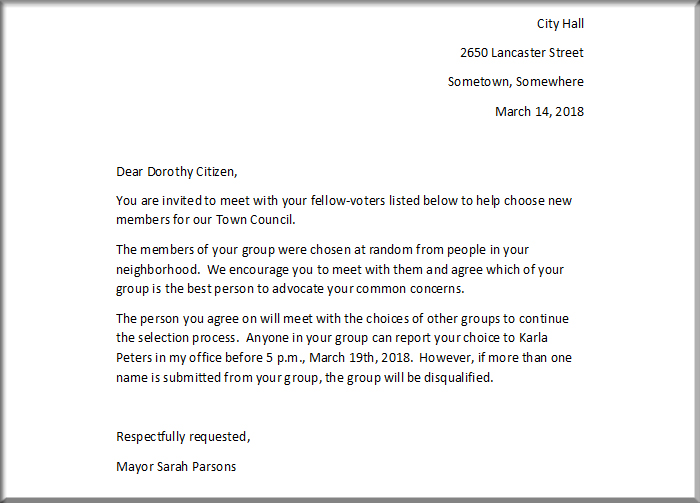
This is part five of a six article series. All six articles have now been published:
- A New Proposal For A Practical Democracy Built On Public Agreement
- The Flaws In Our Existing Voting Machinery
- Creating A More Democratic Process By Correcting Existing Flaws
- The Mechanics Behind A New Election System
- A New Way To Encourage Political Participation By Design
- Practical Democracy: The Next Step In The Evolution Of Democracy
We looked at the flaws in a political system that empowers those with the resources to divide and conquer the people. Then, we set forth the steps required to change that by sifting through the electorate to find those best able to serve the public interest. It may seem difficult to imagine how such a system would work, but it’s actually quite easy.
Thinking Through The Process
Inviting Participation
To create a bottom-up arrangement that lets every member of the community influence political decisions to the full extent of each individual’s desire and ability, the people must be invited to participate in the political process. We can accomplish this if, before an election, the Mayor of a town writes to each voter:

Group Members:
- Dorothy Citizen, 319 Maple Street (394-519-8882)
- Harold Watkins, 2518 Prospect Avenue (394-519-7029)
- Laura Hunt, 30 Minue Street (394-519-5174)
Description
When the people of a community are invited to participate in the political process, the media will be reporting that the people are selecting their political leaders and will describe the process. Most people will meet as requested. Some will meet because they are good citizens and some to influence the events in their community. Some will be unwilling to participate but they will not be a great loss. If they have no interest in the welfare of their community, they are unlikely to contribute anything valuable to their peers.
Whether or not the triads make a selection depends on many variables, including the makeup of the group. Random selection of triad members will produce innumerable arrangements of gender, religion, race, and political persuasion. In addition, the participants may be people of unequal financial resources, unequal intellectual capacity, unequal dress habits, and a multitude of other human differences, any or all of which may affect the way members of the group relate to each other.
If we try to think through how these meetings will go, we quickly realize we cannot guess what the triads will discuss. In the simplified illustration above, there will be more than 8,000 triads discussing their anxieties about their community. The range of issues that concern them is huge and it is unlikely all the triads will have the same concerns.
Trying to think through all the possibilities makes the process seem difficult, but, for real people, for the actual participants in the process, it’s quite simple: They meet and agree which conditions in their town most concern them and which of them is the best advocate for correcting those conditions – or they don’t.
As we consider the process, we find there is only one thing we know for certain: When a triad advances one of its members, the members have agreed on the issues that most concern them and the person best able to address and resolve those issues. Given the abundance and diversity of public issues and the difficulty of achieving perfect agreement, it is likely the triads will advance people whose internal gyroscopes (as described by Mansbridge) are in line with their peers’.
When those chosen meet at the next level, they will discuss their concerns as well as those brought up by their new triad-mates. In the course of the discussions, some issues will be judged to have greater effect on the community than others. The important thing, throughout the process, is not what issues the triads discuss, it is that individuals advance because their peers agree with them. The result is a political system built on agreement rather than confrontation.
As we’ve seen, it’s not difficult to include everyone in the political process. In my next article, we’ll look at why it works and how it can be implemented.
Leave a Reply